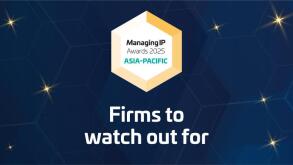In today's keen business competition environment, could a business entity take countermeasures against those patent applications which, if approved, would adversely affect its interest? The answer is yes.
Of the various available countermeasures, filing of a third-party observation is an option that can be considered. To be specific, any party may, during the prosecution of a patent application, file a third-party observation to assist the examiner to examine, by reviewing the brief of the third-party observation and evidence, the novelty or inventive step of the claimed invention, so that the applicant could possibly be forced to narrow down the scope of the claims or to even forestall the application from maturing into a patent.
Coupled with the fact that the cost of filing a third-party observation is usually much cheaper than filing an invalidation action after a patent application matures into a patent, it is particularly worthy of understanding the procedure of a third-party observation.
Given that Taiwan and mainland China are competitive in cutting-edge technologies and that mainland China is a huge consumer market, many applicants would choose to file patent applications on both sides of the strait at the same time. Therefore, a comparison between the two cross-strait sides regarding the procedure of a third-party observation is shown below.
|
Taiwan
|
Mainland China
|
Legitimate basis; operation guidelines |
Article 39 of the Enforcement Rules; revised operation guidelines are implemented on September 1 2020 |
Article 48 of the Enforcement Rule; no operation guidelines are available. |
Application |
A third-party observation can be filed against an invention patent application only.
In case an invention patent application and a utility model application were filed on the same date, and in case the invention patent application has not yet been laid-open for public inspection, it is necessary to enter into the relevant form the application number of the approved utility model application.
|
A third-party observation can be filed against an invention patent application only. |
Time limit to file a third-party observation |
Prior to approval of an invention patent application. |
From the laying-open date to the publication date of the grant of the patent right. (According to the examination guideline, a third-party observation filed after the notification of grant/approval issued by SIPO will not be accepted or examined). |
Who may file a third-party observation? Can it be filed anonymously? If not, will the identity of the third party be disclosed? |
Any person; it can be filed anonymously. The identity of the third party would basically be placed in confidence, unless the third party chooses to make its identity public. |
Any person; it can be filed unanimously. The identity of the third party will be placed in confidence. |
Can the third party submit evidence? |
Yes |
Yes |
Which information will be published in the Patent Application Publication Search System / Patent Examination Data Search System?
|
Cited references
|
Only the date of filing of a third-party observation is recorded for public inspection. |
Will the official opinion on a third-party observation be open to the public? |
No, except for the cited references. |
No |
Will the applicant be informed of the filing of a third-party observation? |
Yes |
No |
Will the applicant be able to review the entire file of a third-party observation? |
Yes |
No |
Will the official opinion on a third-party observation be served on the third party. |
No; however, the third party can judge from the official examination results whether or not the content of a third-party observation has been considered .
|
No; however, the third party can judge from the official examination results whether or not the content of a third-party observation has been considered. |
Is there any suggested format in which a third-party observation and evidence may take? |
Yes |
No |
Is it necessary to pay any official fee? |
No |
No |
One other matter worth mentioning is that while filing of a third-party observation in an anonymous manner exists in practice in either Taiwan or mainland China, any third party can determine whether to reveal his identity on the basis of actual circumstances. For example, if the purpose of filing of a third-party observation is to prevent a competitor's invention patent application from approval or to induce the applicant to narrow down the scope of the claims, disclosing his identify or not would be of no consequence.
However, in other circumstances, such as when one's invention is maliciously copied by others and an invention patent application has been filed for such invention, filing an anonymous third-party observation against an invention patent application suspected of plagiarism may not be an ideal option.
Chiu-Ling Lin
Patent attorney, Saint Island International Patent & Law Offices
E: siiplo@mail.saint-island.com












